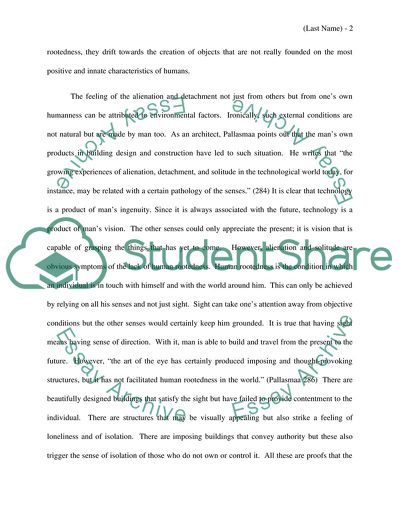Cite this document
(The Senses of Touch and Hearing in Human Rootedness Essay Example | Topics and Well Written Essays - 1750 words, n.d.)
The Senses of Touch and Hearing in Human Rootedness Essay Example | Topics and Well Written Essays - 1750 words. https://studentshare.org/health-sciences-medicine/1756428-what-is-human-rootedness-for-pallasmaa-and-why-is-it-important-be-sure-your-paper-addresses-both-questions
The Senses of Touch and Hearing in Human Rootedness Essay Example | Topics and Well Written Essays - 1750 words. https://studentshare.org/health-sciences-medicine/1756428-what-is-human-rootedness-for-pallasmaa-and-why-is-it-important-be-sure-your-paper-addresses-both-questions
(The Senses of Touch and Hearing in Human Rootedness Essay Example | Topics and Well Written Essays - 1750 Words)
The Senses of Touch and Hearing in Human Rootedness Essay Example | Topics and Well Written Essays - 1750 Words. https://studentshare.org/health-sciences-medicine/1756428-what-is-human-rootedness-for-pallasmaa-and-why-is-it-important-be-sure-your-paper-addresses-both-questions.
The Senses of Touch and Hearing in Human Rootedness Essay Example | Topics and Well Written Essays - 1750 Words. https://studentshare.org/health-sciences-medicine/1756428-what-is-human-rootedness-for-pallasmaa-and-why-is-it-important-be-sure-your-paper-addresses-both-questions.
“The Senses of Touch and Hearing in Human Rootedness Essay Example | Topics and Well Written Essays - 1750 Words”. https://studentshare.org/health-sciences-medicine/1756428-what-is-human-rootedness-for-pallasmaa-and-why-is-it-important-be-sure-your-paper-addresses-both-questions.


